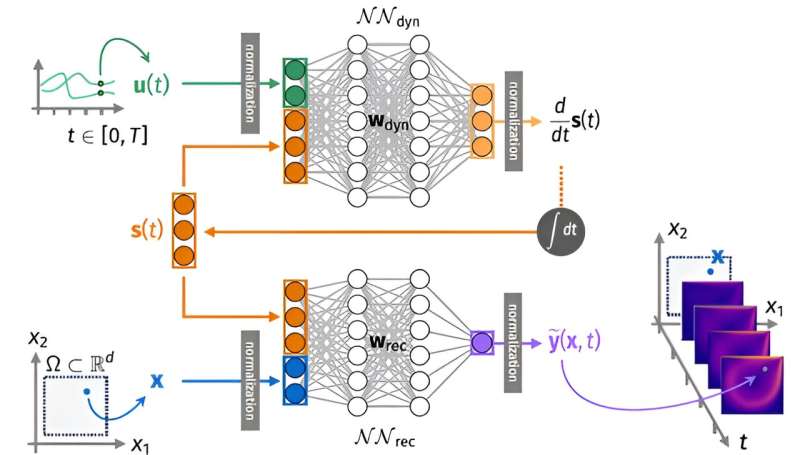This article has been reviewed according to Science X's editorial process and policies. Editors have highlighted the following attributes while ensuring the content's credibility:
fact-checked
peer-reviewed publication
trusted source
proofread
Learning the intrinsic dynamics of spatio-temporal processes through Latent Dynamics Networks

The result of a new study on the intrinsic dynamics of spatio-temporal processes conducted at the MOX laboratory of the Politecnico di Milano (Department of Mathematics) by Francesco Regazzoni, Stefano Pagani, Matteo Salvador has been published in Nature Communications.
The Politecnico researchers introduced an innovative type of artificial neural network called "Latent Dynamics Network" (LDNet), which opens new perspectives in the study of the evolution of systems with spatio-temporal dynamics in response to external stimuli.
Predicting the evolution of complex systems is essential to scientific progress. Traditional approaches based on numerical simulations and mathematical models, however, are often characterized by prohibitive cost and computational time, limiting their applicability in concrete contexts.
The novelty introduced by Politecnico's researchers is the use of Artificial Intelligence techniques to describe system evolution in low-dimensional spaces, thus providing accurate predictions in extremely short timeframes.
The traditional use of differential equations to model spatiotemporal phenomena, such as fluid dynamics, wave propagation, and molecular dynamics, poses significant mathematical and computational challenges. Data-driven methods, as pointed out by the researchers of Politecnico, represent a new paradigm that can overcome these limitations. Data-driven approaches can learn directly from experimental data or build surrogates for high-fidelity models, providing results more quickly and efficiently.
The proposed method: Latent Dynamics Networks
In this study, researchers of Politecnico introduced Latent Dynamics Networks (LDNet), which offer significant innovations over existing methodologies. Such neural networks are able to automatically detect the intrinsic dynamics of the physical system under investigation by representing its state with a small number of variables called latent variables.
Compared with data-driven methods considered state of the art, LDNets allow for up to five times more accurate results, while at the same time allowing for a reduction of more than 90 percent in the number of parameters required.
The implications and future prospects of this innovation are broad, ranging from fluid dynamics to biomechanics, from earth sciences to epidemiology, to name a few. LDNets promise to revolutionize the study of complex systems with space-time dynamics, positively impacting various aspects of scientific research, from real-time simulations to sensitivity analysis, parameter estimation, and uncertainty quantification.
More information: Francesco Regazzoni et al, Learning the intrinsic dynamics of spatio-temporal processes through Latent Dynamics Networks, Nature Communications (2024). DOI: 10.1038/s41467-024-45323-x


















